Memphis Zoo has over 500 species. Here are some of lesser-loved, lesser-known ones you should see
If you’ve been to the Memphis Zoo, you’ve likely seen its marquee exhibits. You’ve listened to the powerful, resonant roar of the male African lion, and chuckled at the playful, scampering Sumatran tiger cubs. You’ve marveled at the intelligence and sheer size of the African elephants, and put your hands on thick glass that separates you and gracefully swimming hippos. You’ve “oohed and awed” at the meerkats, fed hungry reticulated giraffes, and watched the Grizzly bears lounge underneath a waterfall.
Animals like these are bona fide stars that tend to draw crowds, which is understandable. I’m not going to knock anyone for liking elephants; I’m a fan myself. But what of the numerous other creatures on display at the Memphis Zoo?
It’s home to about 3,500 animals that represent over 500 species, and many of them tend to be overlooked.
Take, for example, the zoo’s pair of Australian lungfish. Anatomically, they’re mind-boggling. But how many of us have ever seen ― or even heard of ― the Australian lungfish? Not many. Though worthy of our attention, they have not received it. Like so many other little-known animals at the zoo, they have been cared for by keepers, but neglected by guests.
We at The Commercial Appeal, however, have decided to right this wrong. After interviewing zoo staffers and taking dozens of photos, we are showcasing these spectacular animals in hopes of giving them their due.
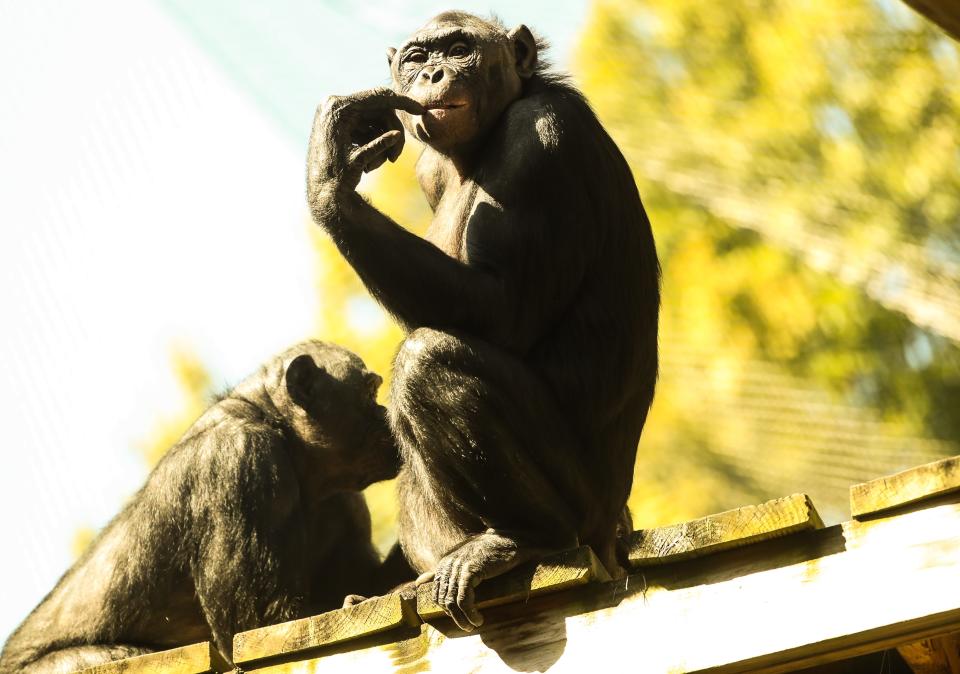
For today is the day of the Australian lungfish. Today is the day of the bonobo. Today is the day of the wombat. Today is the day of the fishing cat. Today is the day of all the lesser-loved animals at the zoo that have been shrouded in anonymity but deserve their time in the spotlight.
We hope it inspires you to pay them a visit the next time you go to the zoo. Odds are you’ll learn something new. And you just might gain a greater appreciation for the beauty and complexity of creation.
Australian lungfish
Associate curator Chris Baker considers the Australian lungfish to be “the coolest thing in the zoo.” When you first see this animal, located in the zoo aquarium, you might think he’s joking. After all, there isn’t anything particularly glamorous about the lungfish’s appearance, especially when compared to some of the aquarium’s other, more iridescent residents (Queen’s angelfish, we’re looking at you).
But the Australian lungfish is, indeed, an extraordinary animal.
One of six extant species of lungfish, it’s native only to a handful of rivers in Queensland, Australia; can reach about four feet in length, and is the oldest type of species in the Memphis Zoo. As a matter of fact, it’s one of the oldest species on earth, as scientists believe this fish has been around for at least 100 million years. Let that sink in. When you go to the zoo and see the Australian lungfish, you are looking at a living fossil, a cretaceous-era creature that was around at the time of the dinosaurs.
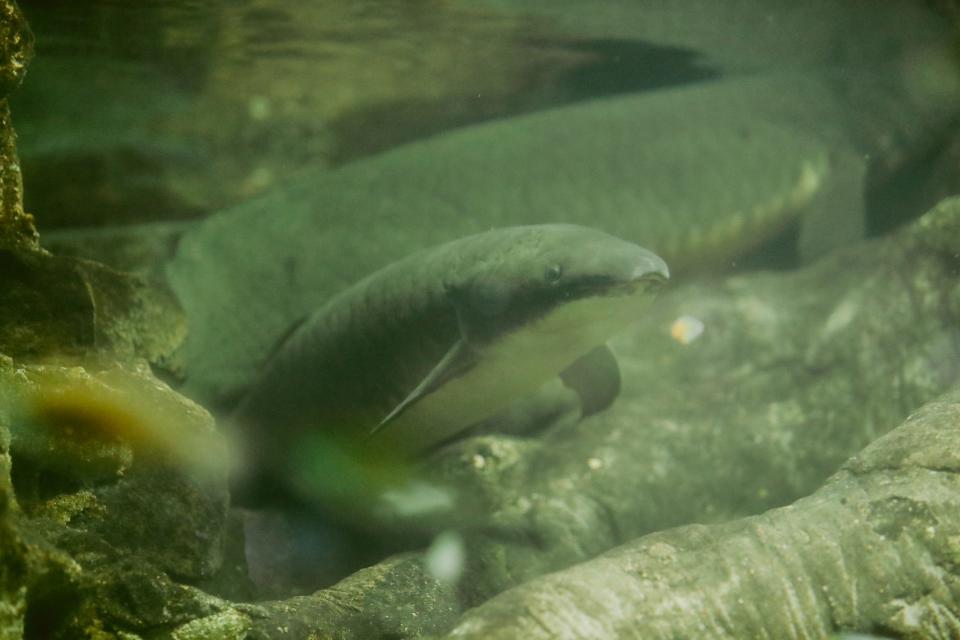
And the species itself hasn’t just lasted millions of years. The individual Australian lungfish has a surprisingly long lifespan. They can live more than 100 years in captivity; a popular Australian lungfish at the Shedd Aquarium in Chicago affectionately named “Grandad” was estimated to be 109 when he passed away. The two Australian lungfish at the Memphis Zoo are about 20 years old, which means they should have plenty of time left.
Remember how I said they’re “anatomically mind-boggling?” Well, prepare to have your mind blown. Most fish, as you know, have gills. Humans have lungs. The Australian lungfish? It has both. It can respire in water, using its gills. And if it so chooses, it can use its single lung to breathe air, which comes in handy when water levels are low or water quality changes. That can come in handy.
“This animal can completely get out of water and walk on land,” Baker said.
That’s not to say Australian lungfishes are going to win any races. As Baker explained, “they’re not trucking,” and their bodies aren’t exactly conducive to roaming around on the ground. But the bizarre anatomy of these ancient animals may hint at a key timepoint in evolutionary history ― when creatures emerged from the oceans, and slowly but surely migrated onto land.
No wonder Baker thinks they’re the coolest animals in the zoo.
Southern hairy-nosed wombat
Kindilan, a southern hairy-nosed wombat who resides in the Animals of the Night exhibit, is an independent, stubborn fellow. There aren’t many zoos that have wombats, so there are visitors who want to see him. But Kindilan tends to sleep in and only wake for a brief period of the day, often when there aren’t many people around.
“Kindilan is not going to do anything that he does not want to do,” said Lauren Caskey, curator of the zoo's central zone.
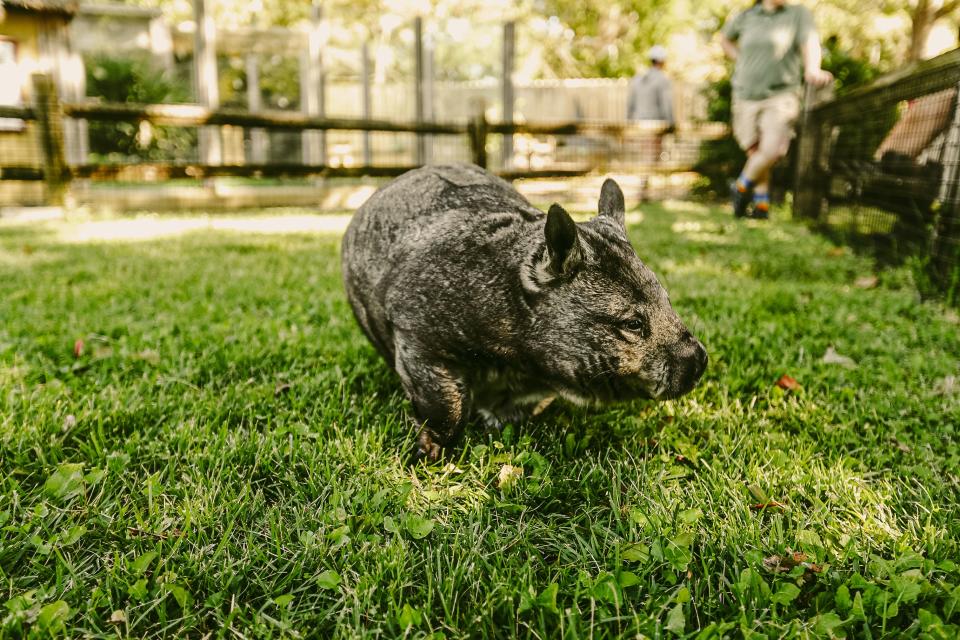
And why should he? Kindilan is aware that he’s built like a tank, and he boasts the unique attributes of his species.
Native to Australia, southern hairy-nosed wombats are nocturnal marsupials who spend most of the day in complex underground burrows. Like other marsupials, female wombats have pouches that carry their developing young. But these pouches, located on their stomachs, face the rear of the wombats rather than the front, which prevents the mothers from shoveling dirt onto their offspring when they dig.
Wombats spend most of their day in their burrows, which aren’t all that dissimilar to the burrows dug by moles and groundhogs. The difference, of course, is that wombats can weigh close to eighty pounds ― so their burrows are dramatically larger and can reach about 100 feet in length.
When they do leave their burrows, generally at night, they can reach the surprising speed of 25 miles per hour in a sprint. And wombats have one of the more unusual self-defense mechanisms in the animal kingdom: a rock-solid butt, composed of four bones that are fused into a plate, that they can use to bash predators.
More: Memphis Zoo raising endangered infant pygmy slow loris. What we know about the baby
It’s an admittedly bizarre superpower, but one that’s effective. Imagine a hungry dingo, hurdling itself at a wombat. The wombat will scurry into its burrow with its butt facing outward, and when the dingo sticks its head in, the wombat will give it a good whack with its behind.
Being a dutiful journalist bent on finding the truth, I wanted to fact-check the strength of the wombat’s caboose, so I gave Kindilan’s butt a poke. It’s pretty dang tough.
Bonobo
The Memphis Zoo has six bonobos. There’s sweet and mild-mannered Mobali. There’s Kiri, who’s typically calm but can still be playful. There’s Laney, who will be so overcome with excitement she’ll jump up and down in the corner. There’s Mpingo, the natural comedian who likes to make the zookeepers laugh. There’s Lisala, who means business, but still loves to play. And there’s Lily, who, like Mobali, is a sweetheart.
“They all have very different personalities,” said zookeeper and team lead Melissa Peterson. “They're very unique and very personable.”
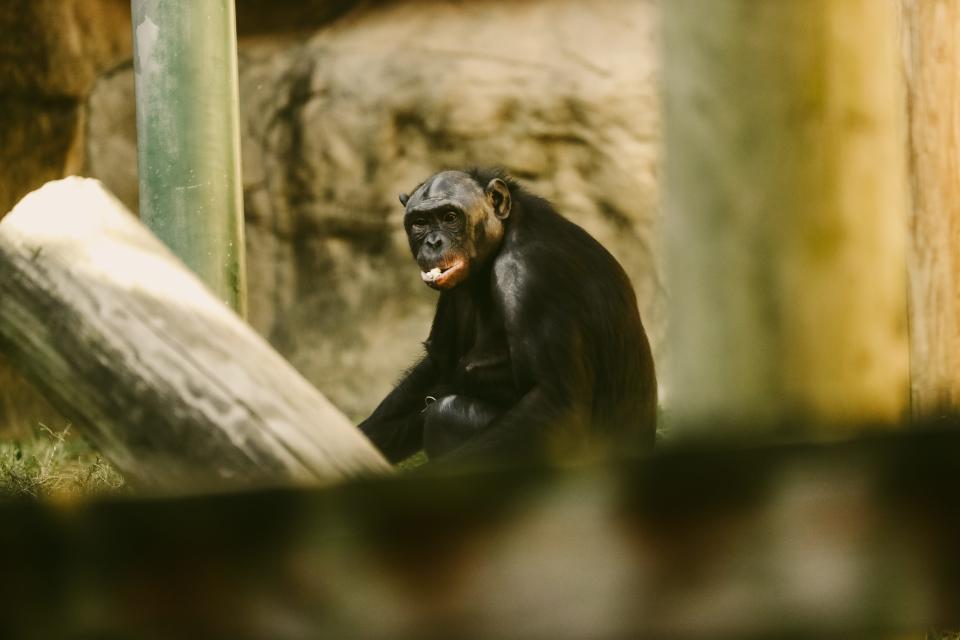
They’re also remarkably like us, as bonobos share 98.7% of their DNA with humans. And if you observe them long enough, you’ll see just how similar they are. Like humans, bonobos have complex social structures; they live in societies of around 100 to 120, and within that, they form smaller, tight-knit subgroups. Like humans, they bond and laugh. Like humans, they help each other take care of their young, and provide assistance with labor and delivery. Like humans, they can be very sensitive.
And, like humans, they perform what the zookeepers generally call… “acts of love.”
They don’t just use these “acts of love” to reproduce, either. They use them to bond. They use them to apologize. They use them to ease tension. It’s a different conflict-resolution strategy taken than many species. Their fellow great apes, chimpanzees, are more likely to settle scores by scrapping.
That’s not to say bonobos aren’t prone to violence. Athletic, at times unpredictable, and considerably stronger than humans, they can and will fight. But it’s not as common as it is with other species.
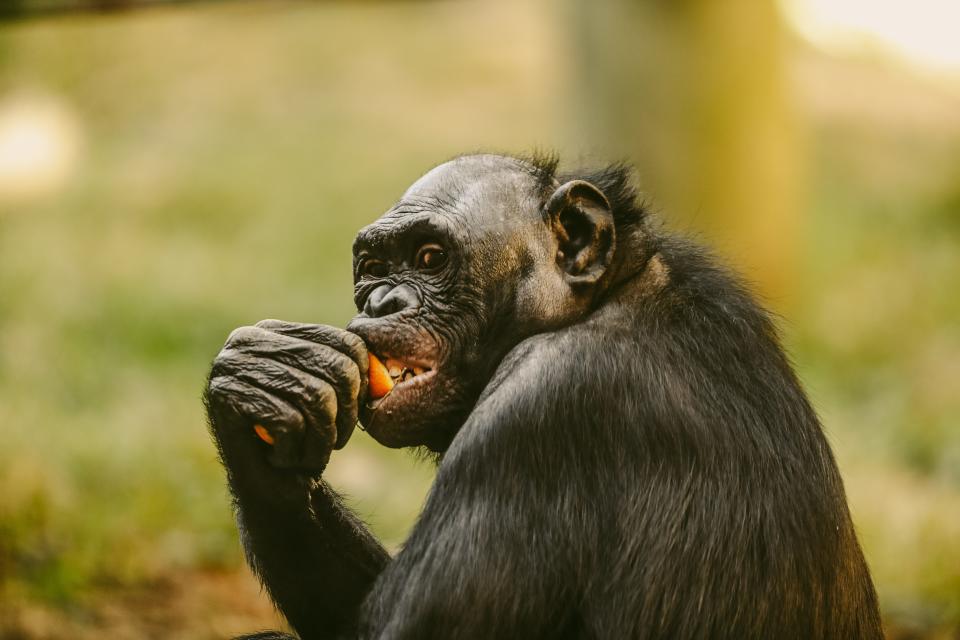
“These guys are actually referred to as the make-love-not-war apes,” Peterson said. “Because they solve their problems, using these acts of love, or other ways, other than fighting.”
These peaceful tactics are taken by an intelligent species that lives in matriarchal societies. Though the male bonobos are physically larger than the females, the females keep them in line.
They form alliances with each other but don’t usually allow the males to form alliances. Whereas the males of other great ape species leave their families in search of other groups when they reach sexual maturity, the opposite is the case with bonobos. Females leave, and males stay behind. Male bonobos remain with their mothers for life, and their social status is determined by the social status of their mother.
The survival status of all bonobos, however, is in question. Found only in the Democratic Republic of the Congo, the primates are classified as endangered, and their population has dwindled over the years. Today, there are an estimated 15,000 to 20,000 of them in the wild.
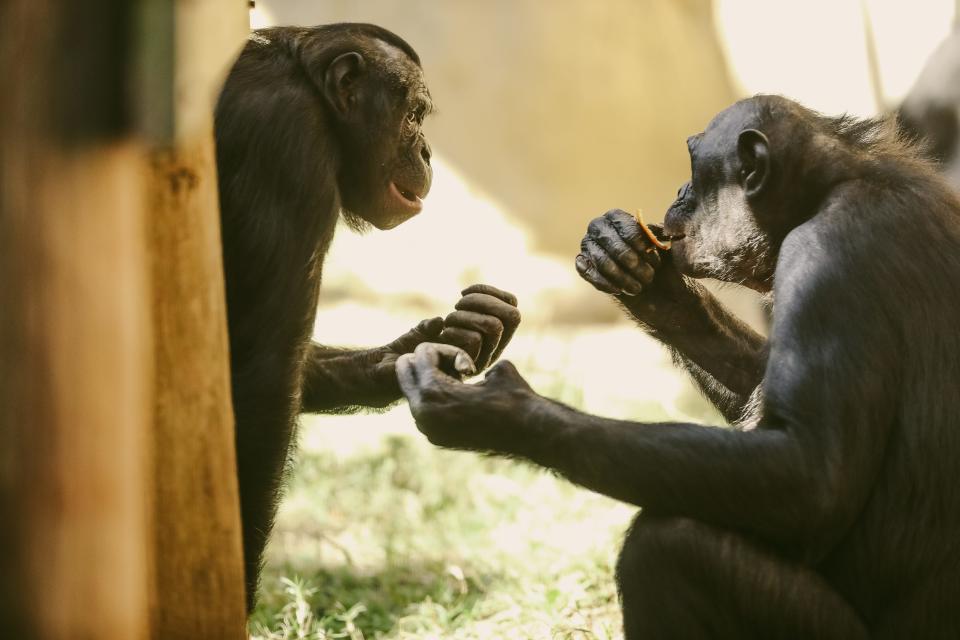
There’s a myriad of reasons for the decline. Bonobos are poached for bushmeat. Young bonobos have been kidnapped from their mothers and sold illegally as part of the exotic pet trade. And sizable portions of their natural habitat are being destroyed as a result of community expansion, commercial logging, and the mining of coltan ― a valuable substance found in cell phones and other electronic devices.
“We actually have a cell phone recycling program here,” Peterson said. “We recycle cell phones to help eliminate the need to create more cell phones to help eliminate the need to mine that coltan.”
Fishing cat
Fishing cats apparently never got the memo that cats aren’t supposed to like water. Roughly twice the size of a house cat, these animals reside by marshes and mangroves in portions of South Asia and live up to their name.
They’ll wait by the water’s edge, watching closely for a fish. When they see one, they’ll often dive into the water, fully submerging themselves and using their claws to catch prey. They’re strong swimmers, too, as their bodies seem to have been designed for the water.
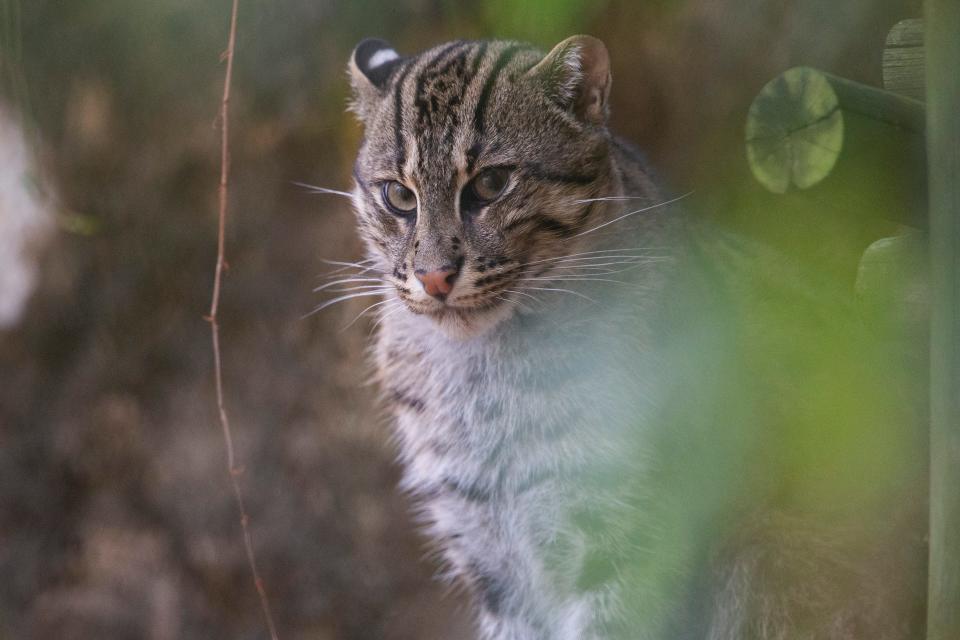
Fishing cats have semi-webbed toes, and like otters, they have a thick undercoat of fur, which helps protect them in the water. Their head is sleek, and their ears are short, compared to most cats, making them more aquadynamic. Their tail is short but strong and can help guide them through the water like a rudder. And their claws are long and semi-retractable ― which means they’re never fully retracted, and always ready to latch onto a slippery fish.
The Memphis Zoo currently has one fishing cat, a three-year-old female named Korra. Like other members of her species, Korra is feisty. As associate curator Anna Chaney said: “These cats don’t know fear.”
Korra is bold, active, “smart as a whip,” and curious, and she makes the hallmark sounds of a fishing cat. They do sometimes give the classic “meow.” But that’s not the only sound they make.
“They make these very interesting Gremlin sounds that just make my day,” Chaney said. “Especially, when we did have two, they would call back and forth to each other.”
More: The Memphis Zoo is now home to two clouded leopards. Take a look!
As Chaney noted, the zoo did previously have two fishing cats. Korra had briefly been paired with another male, and the hope was for them to have kittens, but the male succumbed to a type of bladder cancer ― which fishing cats are bizarrely prone to.
The zoo should be getting another male around March, however, which is poised to be paired with Korra. And the hope is again that they’ll breed, an act that could potentially boost fishing cat numbers.
The fishing cat population is struggling, both in captivity and in the wild. Commercial fishing has taken a toll, with their natural habitat being paved away for shrimp farms and fish farms. They’re considered vulnerable, and there’s an estimated 3,000 to 5,000 left in the wild.
Meanwhile, there are only 16 fishing cats in accredited U.S. zoos.
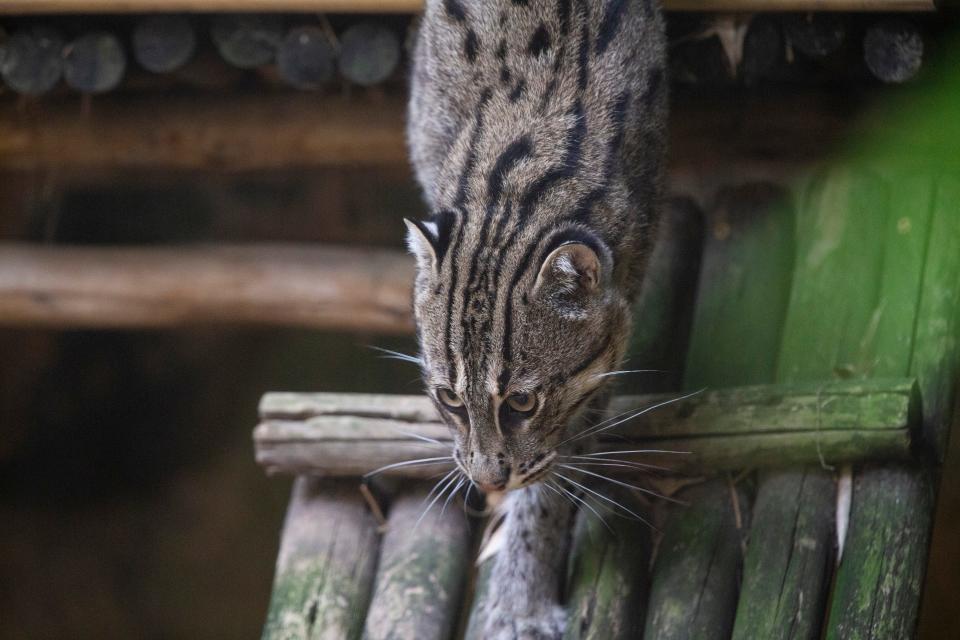
“They're kind of lesser-known. They're not the big flashy, charismatic animals like tigers, elephants, or pandas, even. They just don't get as much buy-in from zoos, so we don’t have a whole lot over in the U.S.,” Chaney said. “Just getting to see one is a pretty lucky event.”
Lucky indeed. When we finished speaking to Anna about fishing cats, we asked if there was anything else we should know about the animals. Her response was simple:
“Everybody should love them.”
Komodo dragon
Residing in the Dragon’s Lair exhibit at the zoo is a living legend.
“Now this guy,” Baker said, “might be the biggest superstar in the whole country.”
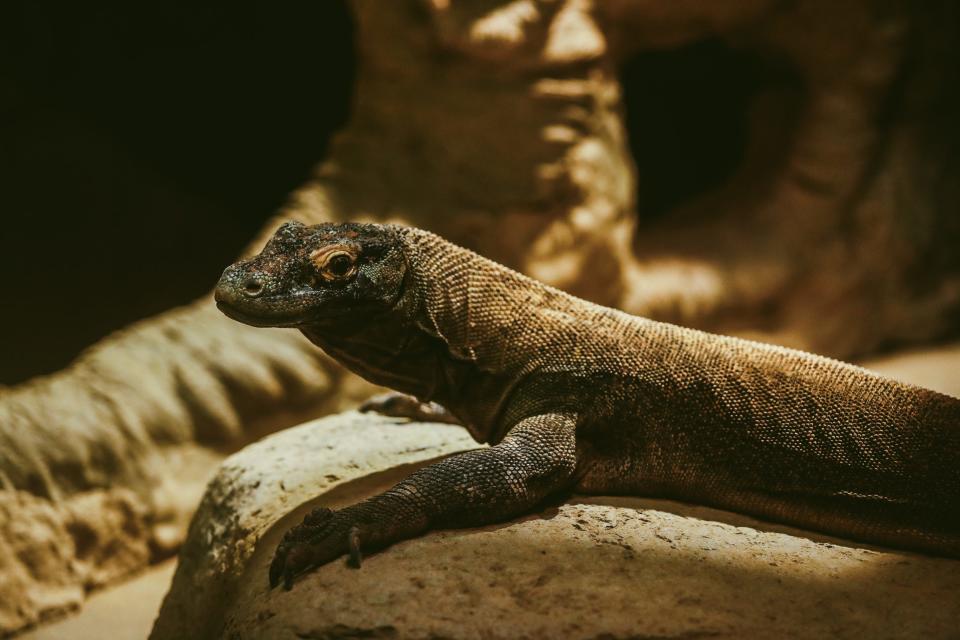
The superstar in question? A Komodo dragon named Jeff Hollywood.
In the late 1990s, a young Jeff was illegally taken from Komodo National Park in the Indonesian archipelago by the notorious wildlife trafficker Anson Wong. Jeff and other rare species were smuggled into North America, and Wong had the intention of selling them for a high price. Komodo dragons were going for $30,000 on the black market, The Washington Post reported at the time. But while Wong thought he was making a deal with a black-market animal dealer, he was communicating with undercover U.S. Fish and Wildlife agents, as part of a major sting operation.
So, Wong went to prison, and young Jeff, unable to return to the wild, was sent to the Los Angeles Zoo.
Then, in 2001, Jeff ― who at the time was named "Komo" ― bit the foot of Sharon Stone’s then-husband, Phil Bronstein, sending him to the hospital for recovery. Bronstein, at the time the executive editor of the San Francisco Chronicle, had gotten insider access. And in a story picked up by CBS, ABC, Fox News, The Guardian, Entertainment Weekly, and Time Magazine, Jeff went for his foot, as Stone looked on from outside the cage.
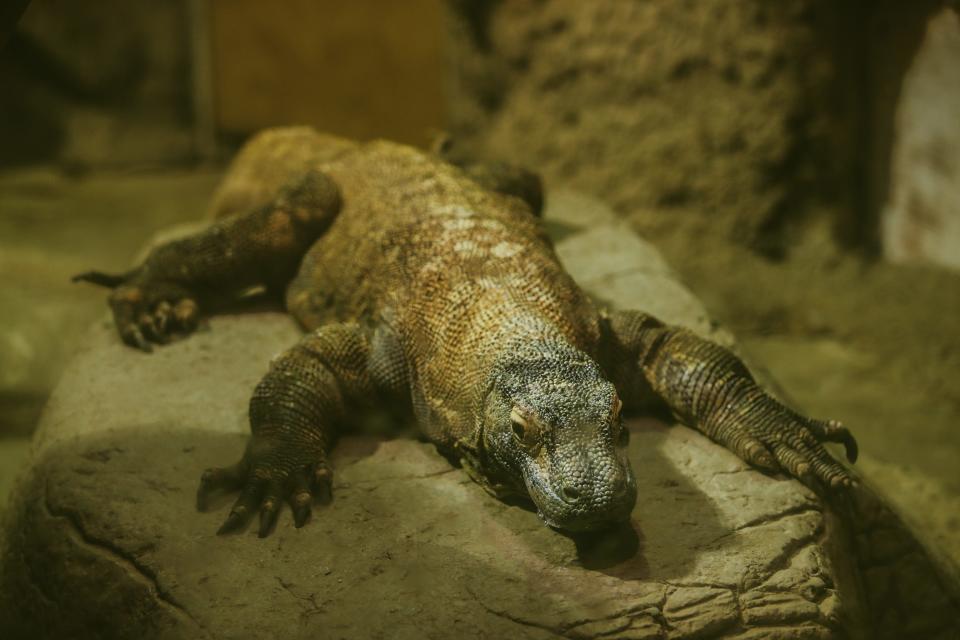
Not long after this, Jeff Hollywood was sent to the Memphis Zoo, and he’s mellowed over the years. These days, Jeff is a senior citizen, by lizard standards, and shares the spotlight with the zoo’s other three Komodo dragons: Voltron, Opheila, and Ivy, who Baker joked “is one of the sexiest dragons” he’s ever seen.
But it would be an injustice to harp on Jeff’s early adventures or Ivy’s sex appeal without diving into the attributes of this extraordinary species.
You don’t want to be bitten by a Komodo dragon. Just the big, sharp teeth are daunting; as Baker put it, “They have a mouth full of steak knives.” And those steak knives are only part of it. Komodo dragons have glands loaded with toxins that lower a prey’s blood pressure and cause massive bleeding.
“It's a great recipe for a predator,” Baker said. “I bite you. I have massive bite pressure and incredibly sharp teeth. You bleed freely. You die soon.”
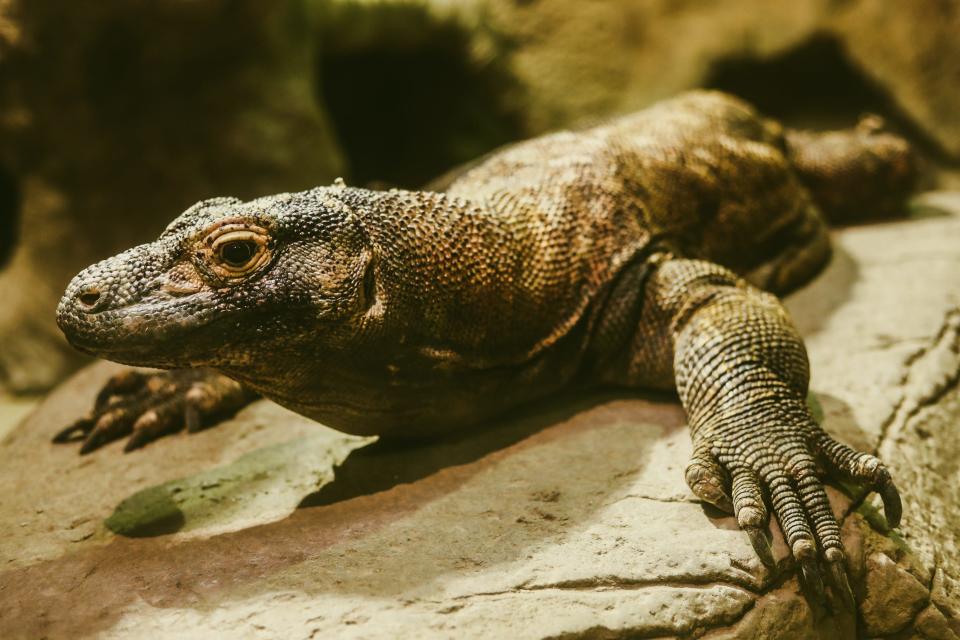
That’s not to say the dragons need the advantage of their toxic glands. The largest species of lizard on the planet, they can weigh about 200 pounds and reach over nine feet in length. They’re fast, and they have sharp claws and a powerful tail that can be used as a whip.
It’s no wonder Komodo dragons are the apex predator in their natural habitat, which is limited to a few Indonesian islands. Their prey varies, as they’ll eat everything from deer to boars to other Komodo dragons.
“You’re either fast or you're lunch,” Baker said. “Because a bigger, badder, nastier dragon will eat you.”
But it would be unfair to simply characterize these animals ― which are endangered ― as brutish, cannibalistic monsters. Komodo dragons are strong swimmers. In their youth, they’re arboreal, and spend much of the first few years of their lives in trees. They’re also surprisingly intelligent.
More: See of the Memphis Zoo's newest babies: A black-footed penguin named Elrond
“These animals know us,” Baker said. “They're calculating. They're intelligent. They have great memory… And they absolutely are sizing up everything around them at all times.”
They may not be able to breathe fire or fly like the mythical beasts that give them their name. But…
“Other than that,” Baker said, “They’re dragons.”
North American porcupine
Timber, a North American porcupine found in the Teton Trek exhibit, can be easy to miss. When your neighbors are grizzlies, elk, and wolves, being overshadowed is an occupational hazard. But Timber is a zookeeper favorite, and for good reason. He’s personable, and when his keepers feed him breakfast in the morning, he’ll run over to them and make soft vocal noises. He even wants to assist with cleaning ― though he’s not as helpful as he thinks he is.
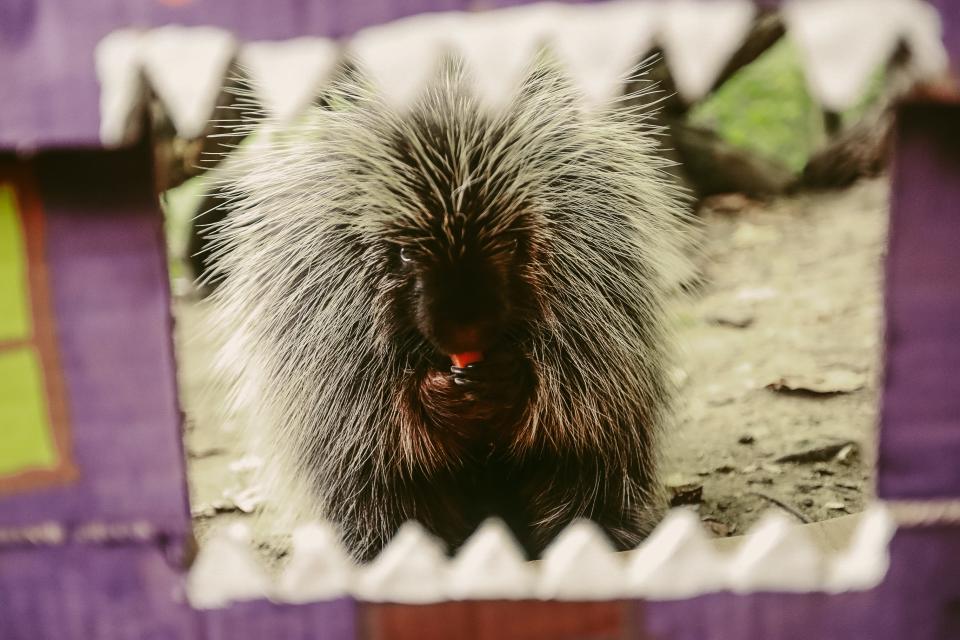
“We work in Teton and Northwest [Passage], so most of our animals are very large and dangerous, like bears and wolves and everything,” said zookeeper and team lead M.E. Hampton. “So, for us, he has a lot of personality.”
North American porcupines ― which are typically found in mountains or forests ― are primarily arboreal and spend much of their time in trees. Their muscular tails help them with this, as they can put weight on them as they climb higher.
Like the more than two dozen other species of porcupine, the North American porcupine also has the trademark barbed quills that can be used as a self-defense mechanism. They can’t shoot these quills, but they will swipe at predators.
“The dangerous part of a porcupine is their back end because they're they'll swat with their tail,” Hampton said. “That's how you usually get quilled.”
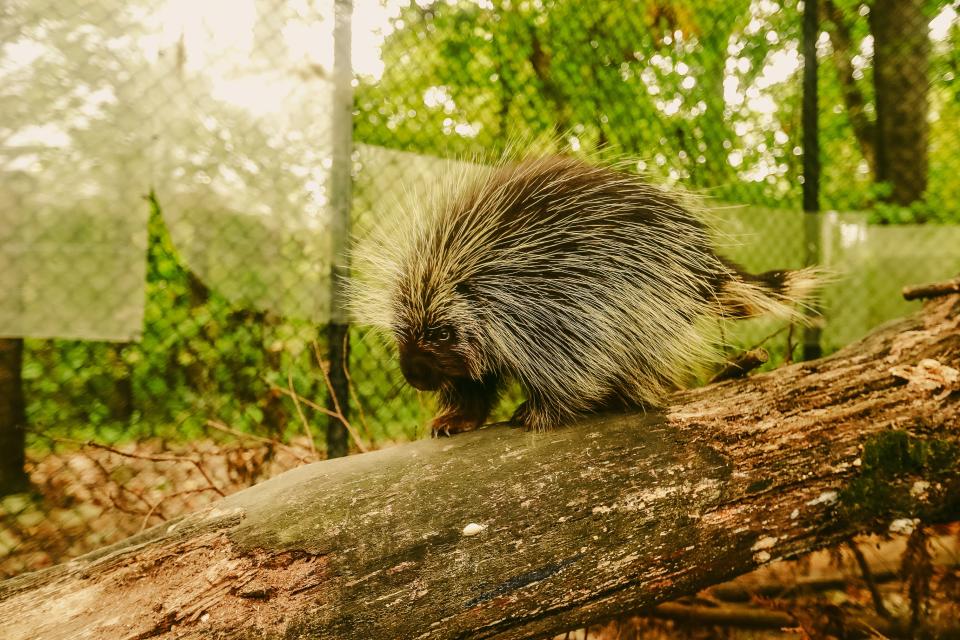
That’s not to say you’ll have any more luck surprising Timber or another North American porcupine from the side; you’ll get quilled there too. And sometimes the swatting isn’t even necessary. When they feel threatened, these animals can flare their quills out and look as if they’ve almost doubled in size, to keep predators from getting too close.
But what are their quills made of? It’s a substance you should be familiar with ― keratin, which is what our fingernails and hair are comprised of. And just as we shed hair, porcupines shed quills, a fact that can lead keepers to get pricked.
“What we frequently get asked is if any of the keepers have been quilled by him,” Hampton said. “No. The only time that we've gotten quills in our fingers, is like, picking up his hay, or cleaning up after him and grabbing a handful of dirty hay that has quills in it.”
Amur leopard
You can make the case that Amur leopards are the most beautiful big cats in the world.
They’re also the rarest.
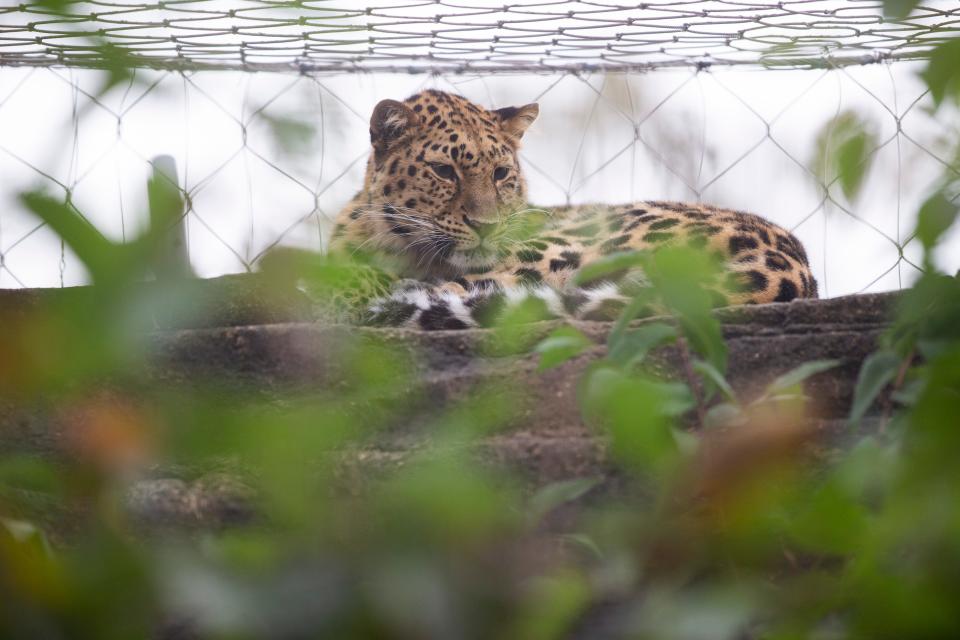
For years, human activity has ravaged the population of Amur leopards, one of eight leopard subspecies. Roads have fragmented their habitat. Logging plantations have lowered the number of prey, leaving less for them to eat. And their beauty has come at a price, as Amur leopards have been hunted mercilessly for their coats.
In the late 1990s, the situation became so dire that the number of wild Amur leopards had dropped to around 30. Intense conservation efforts have since helped the population recover, but the animal is still critically endangered. Today, there are about 100 Amur leopards in the wild and another 200 in captivity.
“I feel like it’s an honor, just to be able to see one,” Chaney said.
At the Memphis Zoo, you can see two Amur leopards. There’s Sputnik, the playful and excited six-year-old male that Chaney compared to Tigger, the Winnie the Pooh character. And there’s Kira, the seven-year-old female who came to Memphis from a zoo in England a few years ago.
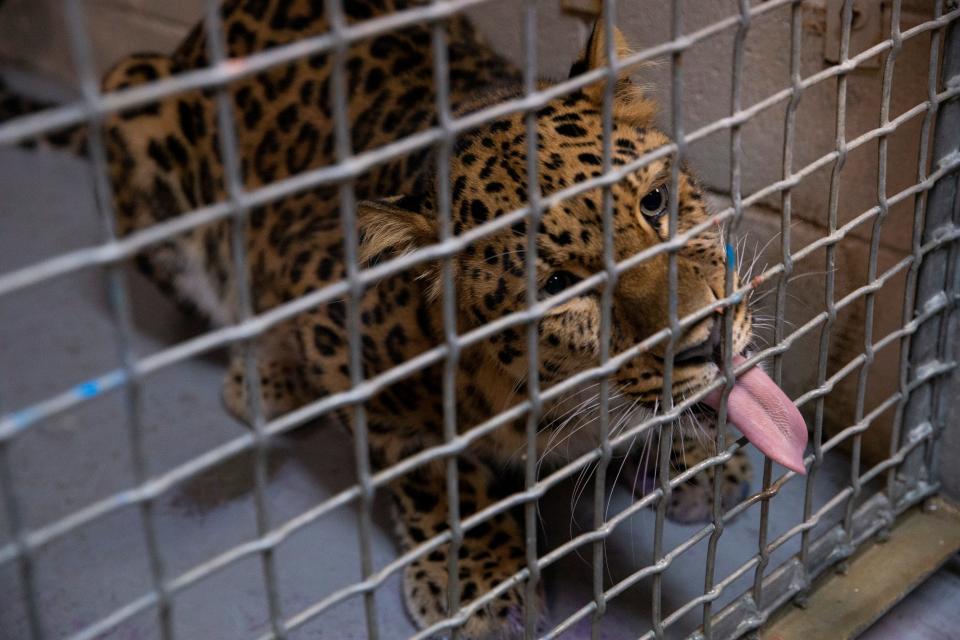
The hope is that the pair will produce cubs, providing the world with even more members of this remarkable species.
Their long, thick fur coats help them tolerate the subzero temperatures that come in their natural habitat. They’re smaller than many other big cats but remarkably athletic. They’re still powerful enough to take down large prey and they can jump nearly 10 feet vertically.
The effort to save the Amur leopard, so far, is also something for conservationists to be proud of, especially after their prospects once looked so bleak.
“The recovery efforts are showing promise,” Chaney said. “It’s a great success story.”
Kirk’s dik-dik
Love is in the air at the Zambezi River Hippo Camp exhibit, because Tenya, the young Kirk’s dik-dik, has a romantic interest.
Krackle, her male suitor, arrived from another zoo in 2023, and things seem to be heating up nicely. They were separated by a fence in November – zookeepers wanted to assess his attitude towards Tenya before letting them share the same space – but they could still smell and see each other.
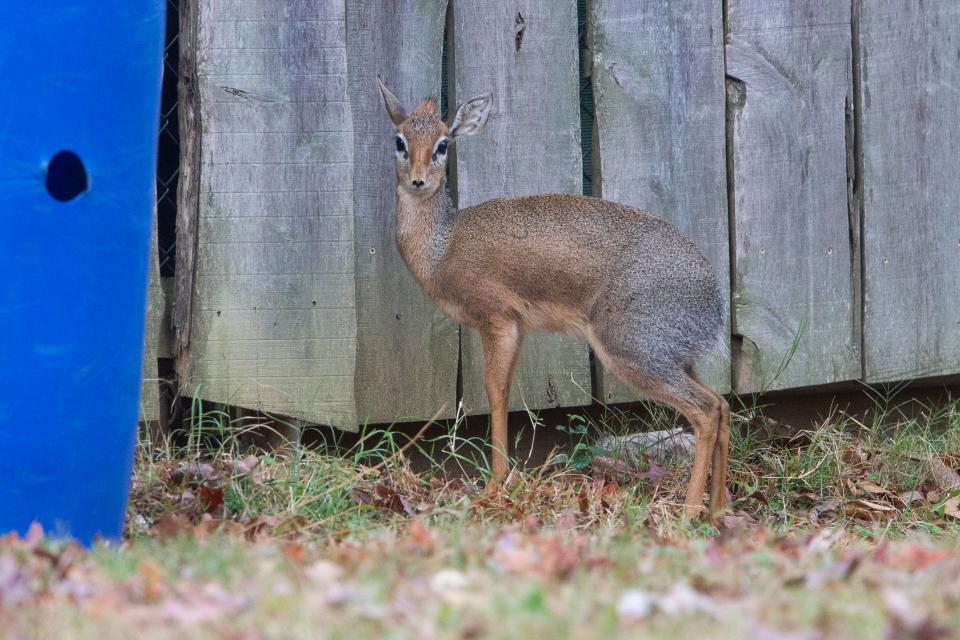
And Krackle and Tenya were clearly ready to be united.
“This is like date 12, and things are going good,” Chaney said in November. “They really like each other, and they’re ready to take it to the next step.”
Krackle and Tenya are currently expected to officially join each other in March. And if all goes according to plan, they'll eventually seal the deal and hopefully produce little dik-diks, which can come frequently.
“Not only do they look like rabbits; they breed like rabbits,” Chaney said. “They typically have two different babies a year, whereas most hoof stock, have one baby a year, if that.”
More: A long-awaited fix to Memphis Zoo parking on the greensward is underway. How it happened
You might be wondering why we’re spotlighting the dik-diks, the third smallest antelope in the world. It’s not as if they’re unusually strong or have an unexpected self-defense mechanism; dik-diks are an easy catch and get eaten by just about everything on the African savannah, including baboons.
But the Kirk’s dik-diks are surprisingly interesting animals. They don’t need to drink water, because they can get all the water they need from their vegetation.
Unlike most antelope, the females are bigger than the males. And while many hoof stock species live in herds, dik-diks tend to be solitary or live in pairs ― pairs that can last a lifetime.
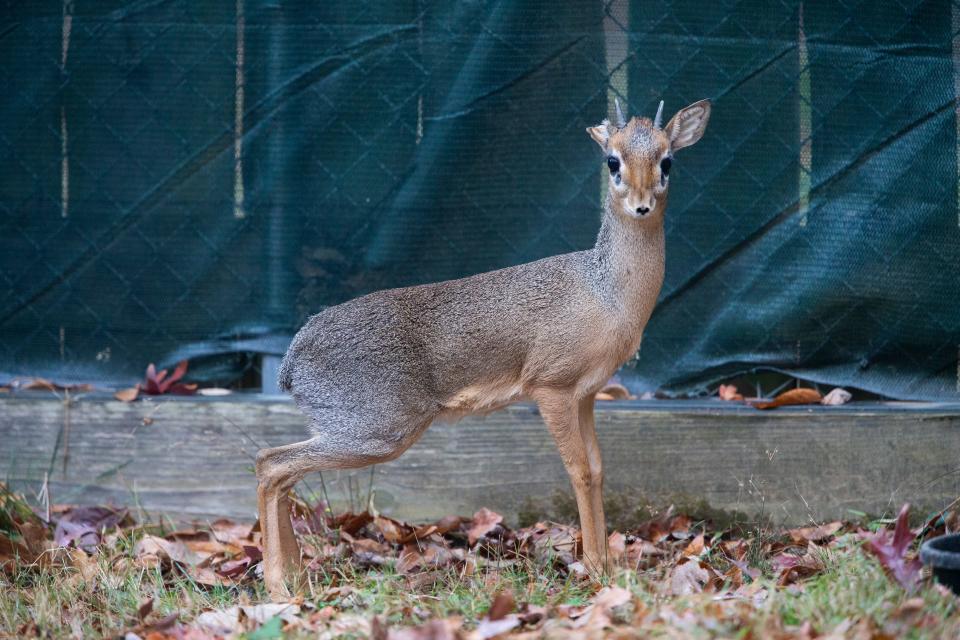
That’s right. Tenya may just have found the love of her life in Krackle because dik-diks are monogamous. Well, to a point…
“The males will be promiscuous given the opportunity. He’ll find a side chick… with no male,” Chaney said. “But they tend to stay together their whole lives.”
Kaup’s aquatic caecilian
When I first laid eyes on a Kaup’s aquatic caecilian in the herpetarium, I was skeptical. Baker had claimed it was fascinating, but I wasn’t so sure.
“It almost looks like a worm,” I said.
“It does, but worms are truly segmented,” Baker said. “These are only superficially segmented. There are no true body segments.”
I can’t say that made me any more impressed. But the more he spoke about the Kaup’s aquatic caecilian, the more interesting this wiggling, snakelike creature turned out to be.
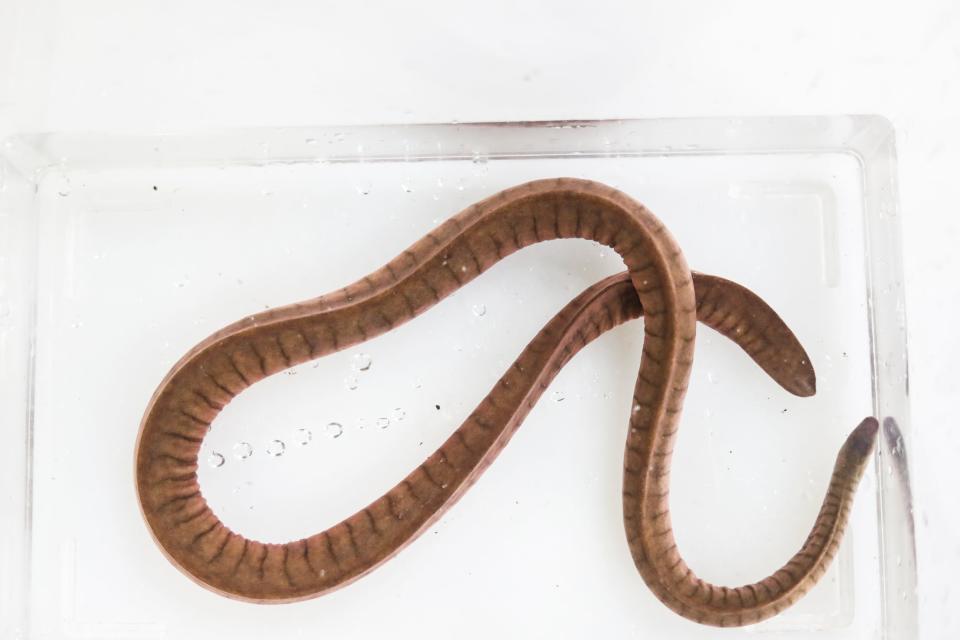
One of nearly 200 caecilian species, Kaup’s aquatic caecilian is a legless amphibian. As Baker said, “It’s very odd because most people are unfamiliar with a legless amphibian.”
But that’s not what makes Kaup’s caecilian so unique. These are carnivores that, in the wild, eat fish, crustaceans, and invertebrates. And though they have poor eyesight, they have a retractable sensory tentacle that helps them navigate their surroundings. These tentacles are remarkably sensitive, too. Just as our eyes are connected to our brains, their tentacle is connected to theirs. In a sense, it’s how they “see the world.”
The Kaup’s caecilian also has microscopic subdermal scales.
“Reptiles have scales on the outside of their body. These have scales under the skin,” he said. “They’re thought to be an evolutionary precursor to the reptiles.”
More: Pack of tundra wolf pups arrives at the Memphis Zoo. Take a look!
And unlike frogs, toads, and other more well-known amphibians, Kaup’s caecilians have internal reproduction systems. They copulate, the females get pregnant, and after birth, the babies stay with their mother for about a month ago, feeding off the slime coat on her body. They’re the only amphibian that has any sort of parental care.
If that weren’t enough to give Kaup’s caecilians a claim to fame, they also have two sets of jaw-closing muscles, and their bite pressure is proportionately harder than most animals.
“They’re biologically incredible,” Baker said, “and very unique.”
Bear cuscus
There’s only one Sulawesi bear cuscus in North America, and you can see him in the Animals of the Night exhibit at the Memphis Zoo. Named Shemp, he’s an arboreal creature that watches and interacts with zookeepers and guests, knows his name, and eats spring mix, sweet potatoes, and leaf eater biscuits.
At first glance, he’ll look like a strange blend between a bear, rodent, and monkey. But Shemp is a marsupial.
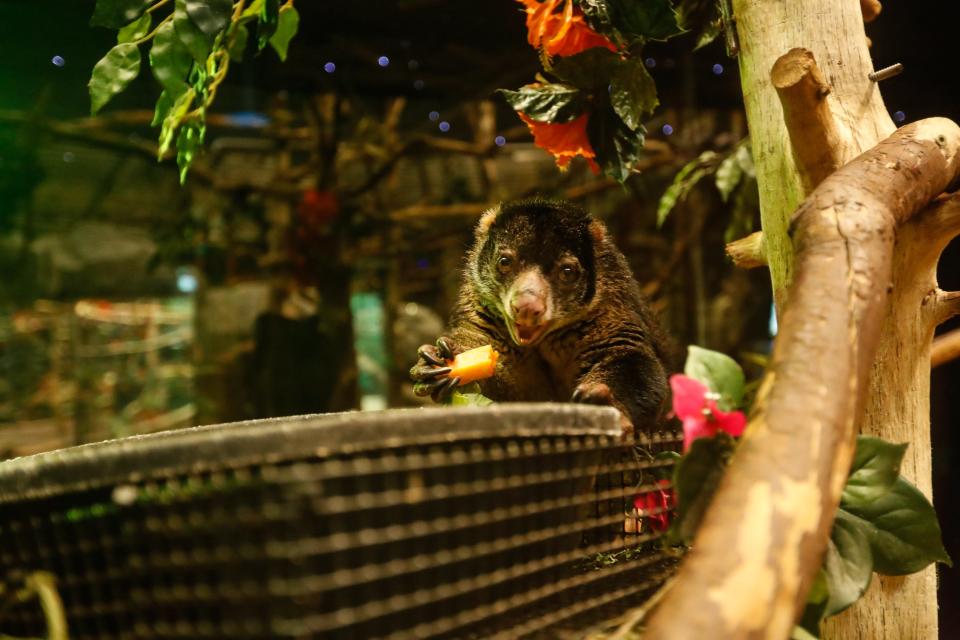
As a male, he doesn’t have the classic marsupial pouch, but female bear cuscuses do, and they carry their offspring in them for about eight months.
Native to the Indonesian island of Sulawesi, bear cuscuses are elusive, so not much is known about them. But we know they’re tree dwellers threatened by human activity, as deforestation has limited their natural habitat and they’ve been hunted for their meat.
We also know they’re strong climbers, thanks in part to their unique anatomy. They have a prehensile tail, which can be used to grab branches and act as an extra hand. They have two opposable thumbs that assist in gripping branches, too, and on their feet, they have a toe that can act as another thumb.
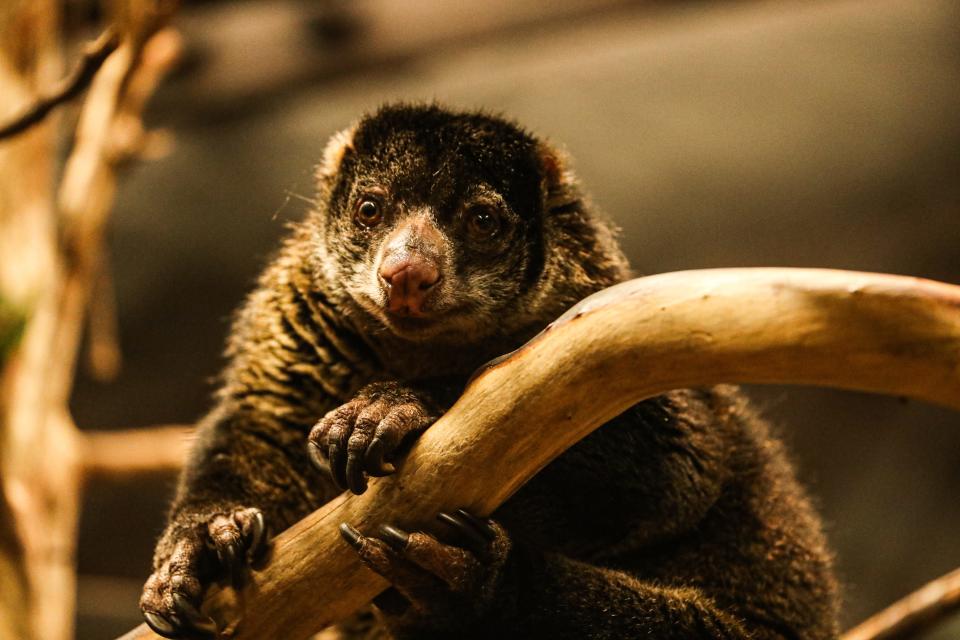
They’re typically not solitary animals, either. Bear cuscuses tend to live in groups of two, and they have a lifespan that’s estimated to be 15 to 16 years.
So come see Shemp, the bear cuscus in the Animals of the Night exhibit. And if you need any more enticing, just know that he shares his enclosure with Kindilan ― everyone’s favorite southern hairy-nosed wombat.
Red river hogs
Warthogs may have been propelled to fame by The Lion King, but there is another African pig species that is just as deserving of attention: the red river hog, which is typically found in rainforests and swamps.
With its red coat, the red river hog is more eye-catching than its movie star counterpart. The males have large warts that protect their tusks when they’re fighting, and both sexes have strong senses of smell that help them find food.
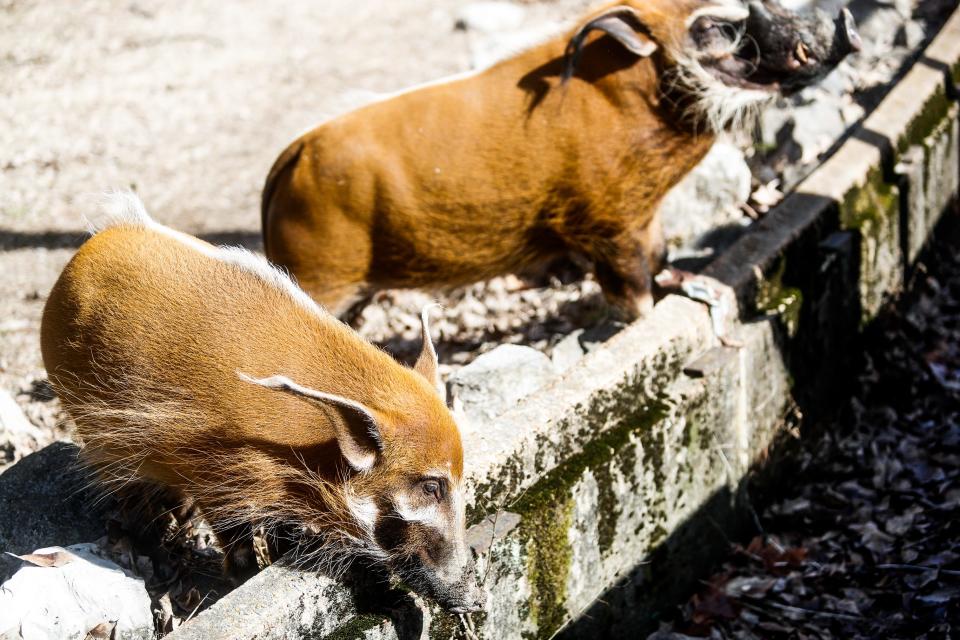
The exact type of food varies. As omnivores, they eat roots, fruits, seeds, and grasses. But they’ll also go for meat. Bird eggs, reptiles, bugs, and even smaller mammals are all on the menu. They’re strong, too. If they need to move a rock to get to the bugs underneath, they will.
Red river hogs also mark their territory in a somewhat unusual way. They do use their tusks to scrape tree trunks, but in addition to this, they lay claim to their spaces with scent glands on their feet and neck, and around their eyes.
“If you see them rubbing on things, some of it is for scratching, but they also might be scent marking their exhibit as well,” said zookeeper Katherine Driscoll.
There are two red river hogs at the zoo, a male named Buddy and a female named Koka. Like other pig species, they’re intelligent, and take part in a variety of training sessions and enrichment activities in their exhibit, which they share with bongos.
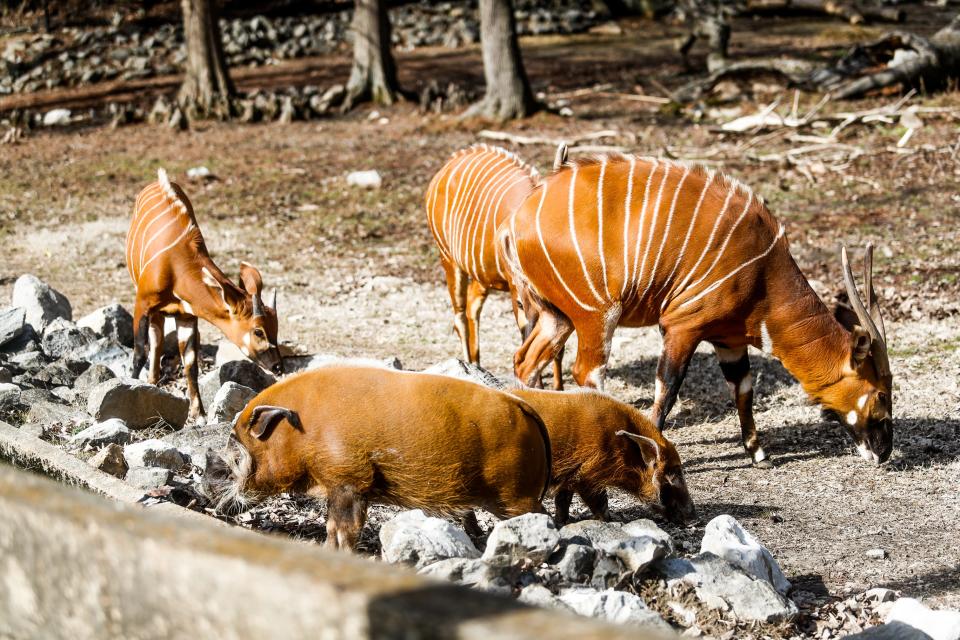
They’re also poised to mate, hopefully. There’s a dramatic age difference between Buddy and Koka; she just arrived at the zoo in December and is about a year and a half old. She won’t even reach maturity until the age of three. Buddy, on the other hand, has been at the zoo since 2008 and is 16. He’s already eclipsed the average lifespan of red river hogs by about a year. But this isn’t uncommon for animals in captivity, and the zoo likes his prospects. He hasn’t had any issues with Koka joining him.
“He’s a really good male,” Driscoll said. “Honestly, he didn't even realize that he had a new pig. He was just like, ‘Oh, you're here.’ They are doing really well together.”
This article originally appeared on Memphis Commercial Appeal: Memphis Zoo showcases lesser-loved species like Amur leopards, bear cuscus

